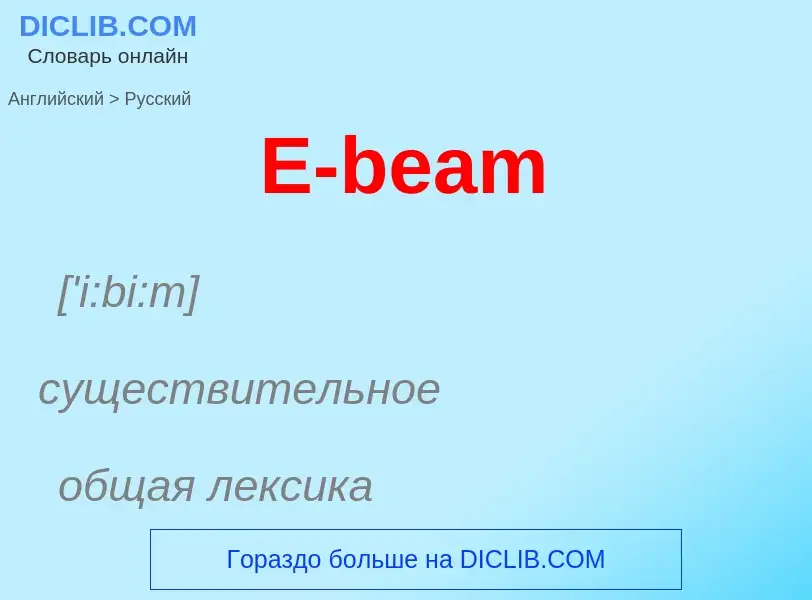Translation and analysis of words by artificial intelligence
On this page you can get a detailed analysis of a word or phrase, produced by the best artificial intelligence technology to date:
- how the word is used
- frequency of use
- it is used more often in oral or written speech
- word translation options
- usage examples (several phrases with translation)
- etymology
E-beam - translation to russian
['i:bi:m]
существительное
общая лексика
электронный пучок
['i:bi:m]
существительное
общая лексика
электронный пучок
общая лексика
пучок электронов
медицина
электронный луч
Definition
1.
Wikipedia

Cathode rays or electron beam (e-beam) are streams of electrons observed in discharge tubes. If an evacuated glass tube is equipped with two electrodes and a voltage is applied, glass behind the positive electrode is observed to glow, due to electrons emitted from the cathode (the electrode connected to the negative terminal of the voltage supply). They were first observed in 1859 by German physicist Julius Plücker and Johann Wilhelm Hittorf, and were named in 1876 by Eugen Goldstein Kathodenstrahlen, or cathode rays. In 1897, British physicist J. J. Thomson showed that cathode rays were composed of a previously unknown negatively charged particle, which was later named the electron. Cathode-ray tubes (CRTs) use a focused beam of electrons deflected by electric or magnetic fields to render an image on a screen.


![[[Glow discharge]] in a low-pressure tube caused by electric current. [[Glow discharge]] in a low-pressure tube caused by electric current.](https://commons.wikimedia.org/wiki/Special:FilePath/Glow discharge regions.jpg?width=200)
.jpg?width=200)
![Cathode rays travel from the cathode at the rear of the tube, striking the glass front, making it glow green by [[fluorescence]]. A metal cross in the tube casts a shadow, demonstrating that the rays travel in straight lines. Cathode rays travel from the cathode at the rear of the tube, striking the glass front, making it glow green by [[fluorescence]]. A metal cross in the tube casts a shadow, demonstrating that the rays travel in straight lines.](https://commons.wikimedia.org/wiki/Special:FilePath/Katódsugarak mágneses mezőben(2).jpg?width=200)
.jpg?width=200)
.jpg?width=200)
